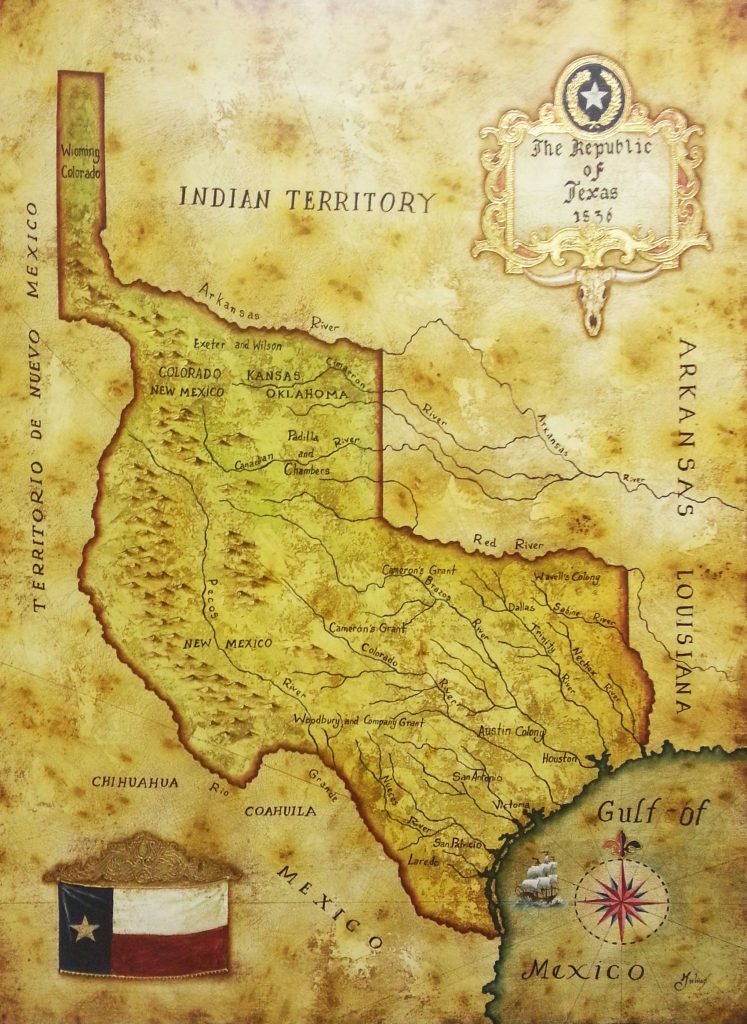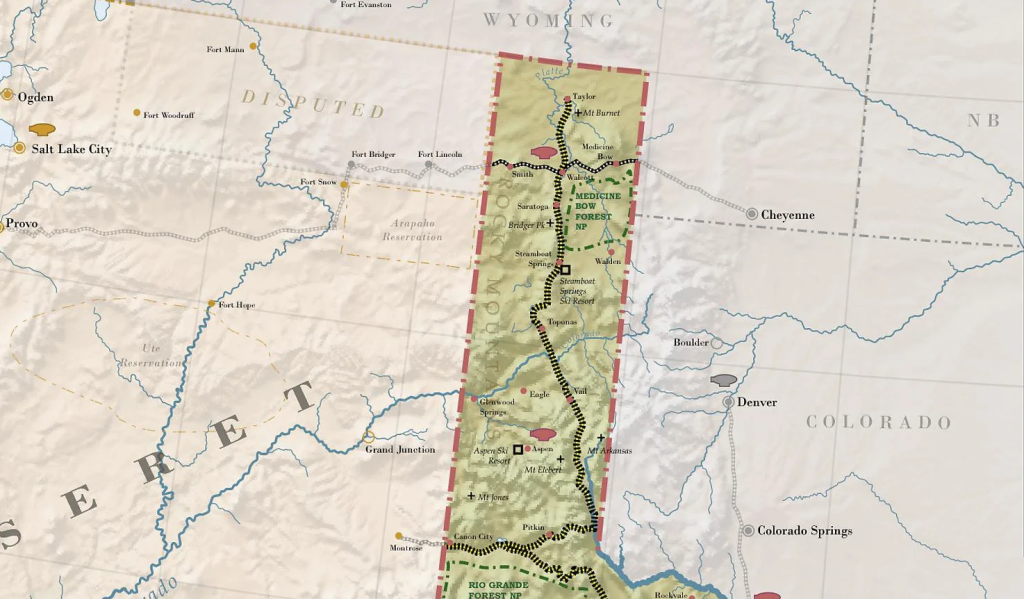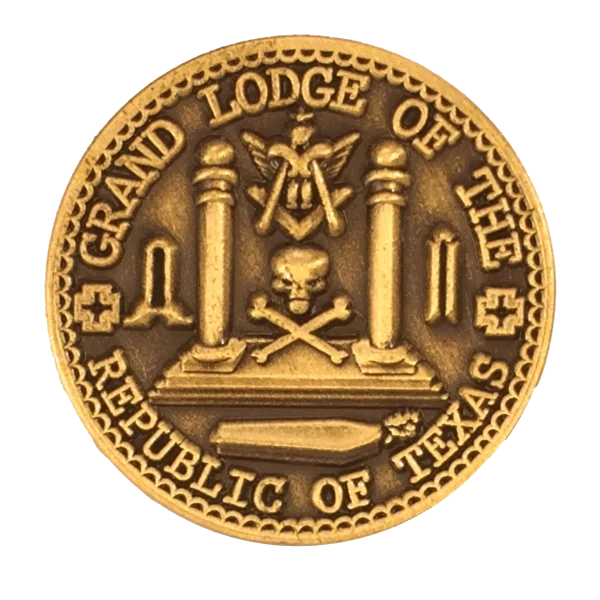Warm Spring Lodge No. 0
A New Beginning
It all started when an old map of the Republic of Texas was discovered by Worshipful Brother Joshua H.L. Shimkus, PM in a closet of the Lodge that served, at least in part as a Library. What he saw intrigued his Masonic curiosities and the part of his mind that helped him earn a Bachelor of Arts in History in 2005. At the time of the discovery of the map he was a new Mason. It was not until late 2008 that W.B. Shimkus had settled in Saratoga and subsequently petitioned the Masonic Lodge for membership. Unknown to him, but the town of Saratoga’s history as part of disputed lands between the Republic of Texas and Mexico; the same lands won after the Battle of the Alamo. It was Brother Gene Cannon, a Texan temporarily residing in the North Platte River Valley, lent him an out of print book that piqued his curiosity because it detailed the lives of Mason’s that lived and fought for their existence along the Rio Grande, and throughout the rest of Texas. The names of those Mason’s, some famous, some obscure became over the years of searching answers from various clues that gave birth to his travels into a past long forgotten and perhaps forever obscured.
It’s probably safe to assume that most locals to the Platte River Valley are equally unaware of their unique shared history with the Free and Independent Republic of Texas. The Lone Star Republic claimed all the land from modern day Steamboat Springs, CO through the North Platte River Valley to the 42nd parallel; in which Saratoga sits at 41°27′16″N which is about 24 miles to the South of that line. It is here in Warm Springs, Republic of Texas now Saratoga, WY that Freemasonry was first settled in the lands that would eventually come to known as State of Wyoming. What Brother Gene’s book demonstrated was that the names surrounding Warm Springs, Republic of Texas were too similar to discount such as a coincidence. It was here, long ago, in Warm Springs, that put Saratoga on the map for a new beginning in the Masonic History of the State of Wyoming.

The Grand Lodge of A.F. & A.M. of Wyoming has long held that the first Masonic Meeting in Wyoming occurred on July 4th, 1864 at Independence Rock along the Oregon Trail in between Rawlins and Casper; and that will, for the time being, have to stand. Yet, as the evidence continues to mount the Masons of Saratoga may have a genuine claim to not have the first meeting in Wyoming but also the first Lodge. Should there be some historical record found, hopefully discovered in bowels of a Texas museum or library, detailing a such a meeting or lodge then not only is the claim of Independence Rock threatened but also the competitive claims of Cheyenne No. 1 and Lander No. 2 as the first lodge.

The discovery of such a lodge, now long forgotten, wouldn’t just predate either of those lodges by a a few years but by decades, potentially even a half a century or more. Perhaps it did not exist, perhaps it was nothing more than a room which had some chalk drawn upon the floor, but the circumstantial evidence that does exist is enough to cause great concern about some recent decisions made by well-intentioned Masons surrounding the future of freemasonry in North Platte River Valley, most especially the future of Saratoga Lodge No. 14. Decisions which would have to be looked at through a new paradigm.
While speculation abounds on America’s second favorite topic, the historical records have always been sparse on the topic of Freemasonry, let alone for at least a time the northern most settlement of the free and independent Republic of Texas; such freedom and liberty was secured at the Alamo. However, there is more to this claim, than Freemasonry being descended from the Knights Templar.
As early as 1820, in the territories control and claimed by the Republic Texas there is known masonic activity. Scholars estimate that 1,100 Freemason’s lived in the then lands that would be come the Republic of Texas. The Grand Lodge of Louisiana had issued several charter’s throughout the disputed territories. In 1836, the Republic of Texas comes into existence, claiming from the start Warm Springs (now Saratoga, WY) as part of it’s lands, and by 1837 three of the those chartered lodges met in Houston and formed the Grand Lodge of the Republic of Texas.1

By 1860, four years prior to Wyoming’s first known meeting on Independence Rock, the Grand Lodge in Texas boasted 226 Lodges and over 9,000 members. Mason’s made up 80% percent of all the Government in the Republic of Texas as well as the newly formed State of Texas. We suspect that with Freemasonry being such an active part of the life in the Republic of Texas. We know that more than one Texan made his way north, and the familiarity of the names involved suggest that they could have met in Warm Springs, maybe even a lodge?
Once the Lone Star state was admitted into the United States; Congress saw fit to chop-up all those hard won lands and make them into the several western States. As our Native American neighbors remind us from time to time, lines on a map don’t make a people. It is their culture, their heritage, and their unique way of life that makes them a people. A short visit into the North Platte River Valley, especially Saratoga and Encampment and surround communities demonstrates that their is something different in these parts, something that courses through the veins of it’s ancestral history. The people that make up this Valley, whether they known it or not are one part Old Texan delivered by Freemasons that first settled these lands long before Wyoming was a State. We hope to be able to find some record of their meetings and perhaps even the recording of a Lodge, no matter how short lived, even if only a sojourner’s lodge. Such a discovery would rewrite Wyoming’s Masonic history.
Check back often, subscribe even, as we detail our quest through history in search of what we are calling “Warm Springs Lodge No. 0“.
